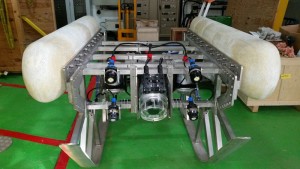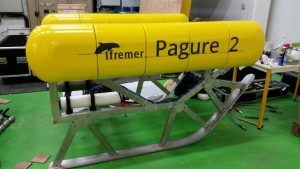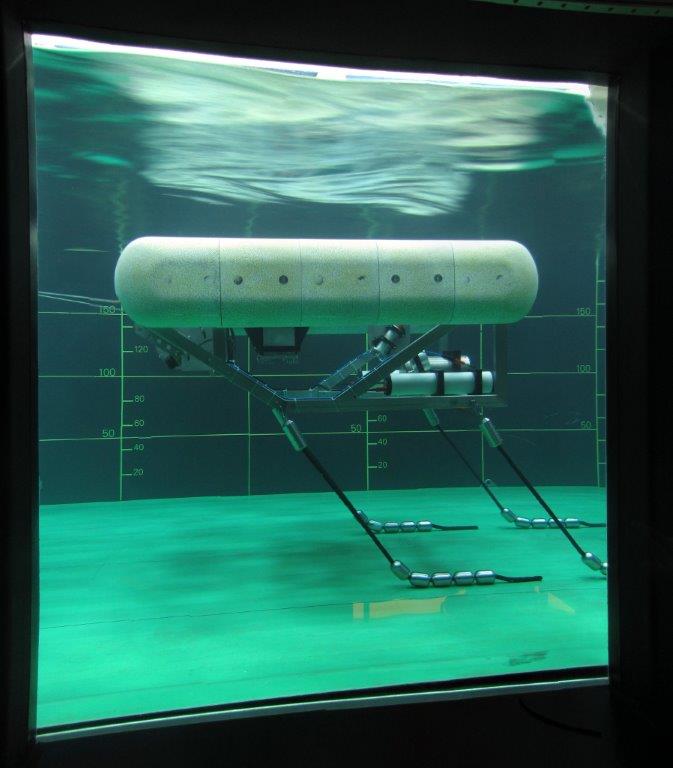From 16 till 20 October 2016, the submarine imaging Pagure II device was tried out in the bay of Brest during a dedicated campaign aboard the Thalia. Developed within the framework of JERICO-NEXT and FFP GALION programs, the Pagure II will allow to facilitate the observation of sea bed and associated biodiversity.

Designed in September 2013 within the framework of the European projects PANACHE and BENTHIS, Pagure is a sled video towed capable of observing seabed until 500 meters deep and potentially deployable on the whole continental shelf. It was developed to answer an increasing need for characterization of benthic environments and biodiversity monitoring, in particular within the networks of protected marine areas.
Improved regards to its first version, the Pagure II technology was tested from 16 till 20 October in the bay of Brest during the campaign Pagure Next, piloted by Antoine Carlier (DYNECO, Laboratory of Benthic Coastal Ecology). The objective was to validate trials realized in the basin of Boulogne sur Mer and to test the imaging equipment installed on the prototype (HD-video cameras, camera and laser).
Thanks to the plentiful uses of Pagure I, deployed at sea since July 2013 (campaigns IBTS, CGFS, CAMANOC, EVOHE, FEBBE, SPOKEN ILL, etc.), several improvement were identified such as the resistance of the device under pressure, its stability and its impact on the bottom or still its hydrodynamic behavior when this machine is towed by a ship. As the first version, Pagure II can be used in mode “sledge on the bottom thanks to 2 skates. The main innovation is its system of buoyancy, through which the device can also “overfly” the bottom at approximately 50 cm to one meter of height.

This new way of functioning will allow to increase the fields of shots, to explore more irregular seabed and to reduce its ecological imprint on benthic habitats. Pagure II will therefore be able to explore a largest diversity of seabed, including fragile environments, without damaging them.
Mainly developed within the framework of the European project JERICO-NEXT, this Pagure new generation is also equipped with more successful lightings and with a more reliable system of regulation of its slanted camera.
Designed and tested in the basin of Boulogne-sur-Mer, Pagure II was already deployed at sea on the occasion of CGFS (September 23rd-October 14th, 2016), campaign of evaluation of the halieutic stocks in the eastern English Channel. The Pagure II will be an additional tool for the monitoring methods implemented, in particular in the framework of ecosystem approach to fisheries or Marine Strategy Framework Directive (MSFD). It can be operational in various depth conditions, various seabed compositions, various currents and meteorological conditions. Thanks to its ease of use, it may be deployed without recurring to a specialized staff. The device will so generate quantitative information on benthic communities and will allow to measure with precision the size and the abundance of the species found.

